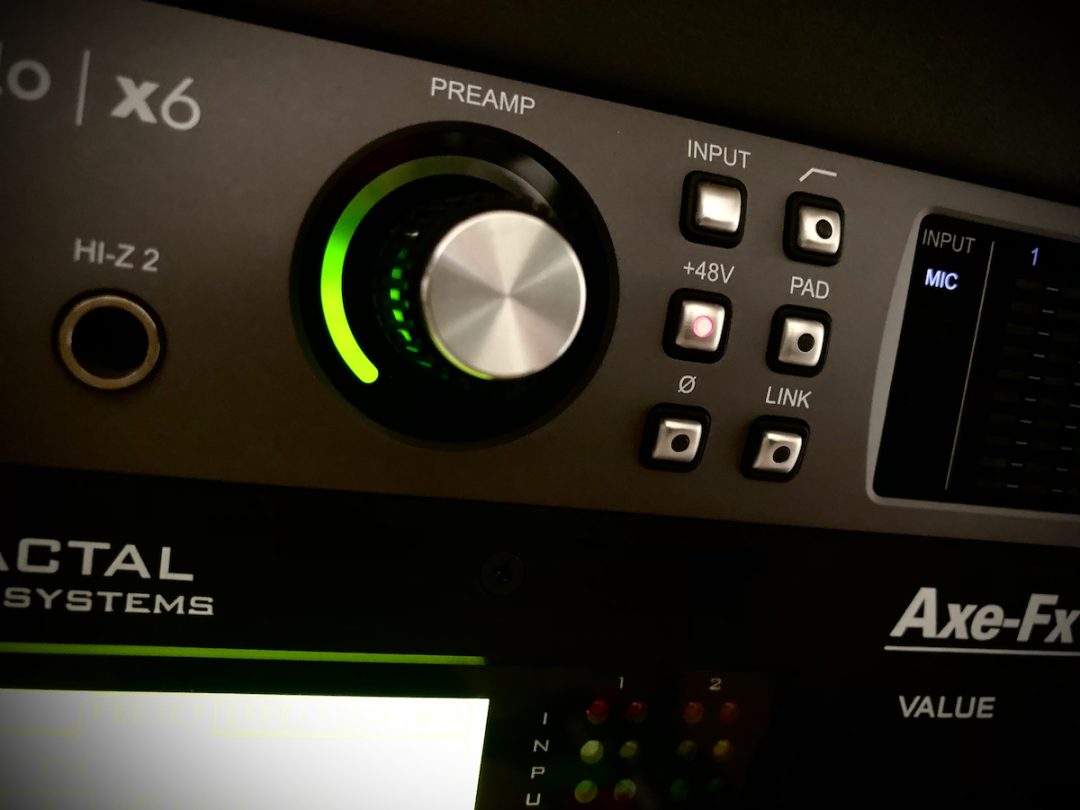Phantom power can be confusing when you first get into recording. This guide to phantom power will answer some of the most frequently asked questions beginner engineers have.
Introduction: What Is Phantom Power?
In order to understand phantom power, it’s a good idea to cover the basics of condenser microphones (also known as capacitor microphones), which operate using an electrical principle called variable capacitance.
Inside a condenser’s capsule is a thin membrane typically made from mylar, called the diaphragm, and a metal backplate. When acoustic energy from a voice or instrument hits the diaphragm, it’s sensitive enough to vibrate back and forth. This vibration varies the distance between the diaphragm and backplate, and ultimately changes the capacitance, or stored electrical charge.
The fluctuating charge converts acoustic energy entering the mic into a recordable electrical signal. But these active components must be powered somehow beforehand…
Phantom power sends a DC current from a preamp or mixer, through the XLR cable, and to the condenser microphone to power the internal active circuitry. The global standard for phantom is 11V to 52V DC, with studio mics running on +48V. You’ll often find phantom written as +48V on preamps, mixers, audio interfaces, and the like.
Why is it called “phantom” power?
Between the ’30s and ’50s, condenser mics had bulky external power supplies. (Today’s tube microphones still have them.) In the ’60s, Neumann and Schoeps started work on a new form of power that would get rid of these weighty boxes. +48V became the new standard for running condenser microphones, and it was sent from the mixer, through the XLR cable, to the mic.
The so-called “invisible” new power supply earned itself the name “phantom.” Happy Halloween.
Is it safe to leave phantom power on?
A good rule of thumb is to turn phantom off whenever you’re connecting or disconnecting a condenser microphone. It’s just the safest practice—plugging or unplugging a mic with phantom on won’t necessarily destroy it, but it’s best to avoid being the victim of any weird electrical anomalies, or just plain bad luck.
That said, you should never plug in a ribbon mic with phantom power on, or turn it on period. Apart from modern active ribbon microphones which require it, phantom power can damage the sensitive internal components of older passive ribbon mics.
What Types of Microphones Use Phantom Power?
The three main types of microphones are condensers, dynamics, and ribbons.
Do condenser mics need phantom power?
Yes! Condenser microphones are the primary kind which require +48V phantom power to operate the active circuitry inside. An exception are tube microphones, which are a type of condenser that still use external power supplies.
Do dynamic mics need phantom power?
No. Dynamic microphones work on a different principle to generate sound. They contain a mechanical moving coil which vibrates from acoustic energy and sends an electrical signal for recording. Dynamic mics are more robust than condensers, i.e., less sensitive, and can tolerate higher SPLs without distorting. They are passive, and do not require +48V power. It’s worth noting that sending phantom power to a dynamic usually won’t hurt it.
Do ribbon mics need phantom power?
Sometimes. Certain contemporary ribbon mics contain active circuitry like condensers, and require phantom power to run. However, you can destroy passive ribbon microphones with +48V; always be absolutely sure of whether the ribbon you’re using is passive or active before engaging phantom.
